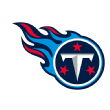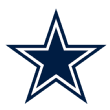Should Lonzo Ball or Markelle Fultz be No. 1 in the 2017 draft?
As the high-stakes NBA draft lottery approaches for teams like the
Boston Celtics,
Phoenix Suns and
Los Angeles Lakers, the question of who should be the No. 1 pick remains unresolved: Is it
Markelle Fultz or
Lonzo Ball?
Chad Ford and Kevin Pelton make a case for each player and give their verdicts, and identify potential sleeper picks.
The case for Fultz
Chad Ford: While there are a lot of terrific draft prospects, Washington's Markelle Fultz and UCLA's Lonzo Ball look like the two main contenders for the No. 1 spot.
I
surveyed lottery teams several weeks ago to get a feel for who each team would select if they had the No. 1 pick. While no teams had decided, and all were still collecting data, it was a split decision. Seven teams leaned toward Fultz. Seven teams leaned toward Ball. If you added up the lottery odds for each of those teams, Fultz had a 57.2 percent chance of getting selected No. 1.
But that's talking about what teams might do. Today, Kevin, let's talk about what they
should do.
Let's start with Fultz. He played at Washington, in your backyard, and you got to see him a lot. What's the case you would make to an NBA front office for why Fultz should be the No. 1 pick?
Kevin Pelton: From a statistical standpoint, I think it starts with something I mentioned
when we discussed Ball vs. Fultz during the season: Fultz really has no weaknesses statistically.
The way I define that is whether the player's projection in 10 key categories is in the bottom 25 percent of NBA-bound players at his position. The closest Fultz comes to a weakness in those categories is that he didn't get to the free throw line a ton. And remember, that's all NBA-bound players at the position, so there's no adjustment for age. So that's impressive for a freshman.
By contrast, Ball projects in the bottom quarter of NBA-bound point guards in both his free throw attempt rate and his usage rate, so he has two statistical weaknesses.
The other thing I'd point to statistically is how effective Fultz was in the pick-and-roll game. Despite playing on a team with poor spacing and few other offensive threats, he averaged 1.01 points per play on pick-and-rolls, which ranked 15th among D-I players with at least 100 such plays, according to Synergy Sports tracking. Iowa State senior
Monte Morris is the only NBA prospect who outperformed Fultz in terms of pick-and-roll scoring efficiency.
Ball finished just 49 plays off pick-and-rolls with a shot, a trip to the free throw line or turnover all season and averaged 0.83 points on those plays. The NBA is a pick-and-roll league, and Fultz fits into that much more easily than Ball.
What would scouts add to that summary, Chad?
Ford. I think the statistics and the traditional scouting line up well here.
The first thing scouts will point to is the lack of holes in Fultz's game. That's such a rare phenomenon in a player so young. Even elite talents such as
LeBron James and
Kevin Durant had significant weaknesses coming into the NBA.
Scouts also give Fultz the advantage as a scorer, shooter and athlete. While he isn't as creative or as natural a passer as Ball, Fultz's ability to run the pick-and-roll is perhaps a more valuable skill in the modern NBA. Fultz plays more like elite modern NBA point guards than Ball does.
Finally, Fultz comes without the hype and distractions that Ball brings to the table. Many teams are worried about his father, LaVar Ball, and the impact he'll have on Lonzo and the team. There are zero worries about Fultz as a person or teammate.
The case for Ball
Ford: OK, let's look at Ball. What's the case for Ball over Fultz as the No. 1 pick?
Pelton: While the case for Fultz focused on his lack of weaknesses, the case for Ball focuses on his strengths. He projects in the top 25 percent of NBA-bound point guards in five categories (2-point percentage, rebound percentage, assist percentage, block percentage and fouls per 100 plays) to Fultz's three categories (usage, rebound and block percentage).
Moreover, Ball is truly elite in more of those categories. Only
Kendall Marshall (drafted in 2012) had a better projected assist percentage among freshmen in my database of players who ended up in the NBA.
And the 73.2 percent Ball shot on 2-point attempts is off the charts for a point guard. It ranks 16th since 1992-93 among players with at least 100 2-point attempts,
per Sports-Reference.com. Ball's shot chart looks like a Daryl Morey dream: It's all layups or dunks and 3s.
As a result, a key stat -- Ball's 3.6 projected wins above replacement player (WARP) -- is the best stats-only projection for any player in this year's draft. It ranks 11th among freshmen dating back to 2003, and six of the 10 players ahead of Ball have developed into NBA All-Stars:
DeMarcus Cousins,
Anthony Davis, Durant,
James Harden,
Kyrie Irving and
Kevin Love. Fultz's 2.0 stats-only projection is hardly a red flag, but it's worse than that of the typical No. 1 pick (2.9 WARP).
So my projections would favor Ball. What case would scouts make?
Ford: Again, I think the scouting and analytics align. The word you hear most associated with Ball is "special." While he has a few glaring weaknesses, his strengths are at an elite level.
That starts with otherworldly court vision. Ball's basketball IQ and feel for the game draw comparisons to players such as
Jason Kidd and Magic Johnson. Ball has great size for his position (6-foot-5), rebounds well and uses creativity as a ball handler to get to the rim.
Ball lacks any semblance of a midrange game, didn't play the pick-and-roll game in college, can be an indifferent defender and plays too unselfishly at times. But he makes others around him better. Ball plays with a swagger that scouts say reminds them of other elite players in the NBA.
His
father's antics have certainly raised concerns, but teams that have done their homework say the report out of UCLA is that Lonzo was respectful and focused -- the opposite of his dad in many ways.
While Fultz has a much higher floor and could fit on a number of teams, Ball appears to have the higher ceiling if he lands in the right offense.
Sleeper candidates and a final verdict
Ford: Are those two players the only legitimate candidates for the No. 1 pick? Is there a sleeper you see who should be in the mix with Ball or Fultz?
Pelton: Not really, no. The next three players on your big board all have stats-only WARP projections worse than 1.0, so they're not in the ballpark with Fultz, let alone Ball. In fact, the third-ranked player in my consensus projections, which factor in where players rank in your top 100, is Gonzaga center
Zach Collins, whose 2.5 stats-only WARP projection is ahead of Fultz. But I don't think there's a reasonable case to take Collins ahead of either guard.
Are there any teams that might have Kansas'
Josh Jackson at the top of their boards?
Ford: I agree that it's either Fultz or Ball. I'm a huge Jackson fan. Some scouts love
Jayson Tatum, and
De'Aaron Fox has made a major push on some boards to the point that a couple of teams now have him ranked ahead of Ball. However, none of those players really brings the upside that Fultz and Ball have.
Collins is an interesting case. Every scout I speak to loves him. He lacked the hype out of high school that the other top prospects had, and his limited role at Gonzaga certainly hurts his stock. But based on pure talent, Collins might be the third-best prospect in the draft. I could see him rising considerably on draft night.
So what's the verdict, Kevin? Ball or Fultz?
Pelton: The cop-out answer is, as you said, that it depends on the team. Generally, I think Ball would work better on a team with other talented players -- both other pick-and-roll options and capable shooters who can finish the shots he creates with his playmaking. Fultz has a better chance of lifting a less-talented offense to adequacy with his shot creation.
If we strip that away, I'd probably lean toward Ball because of what you mentioned earlier about his greater upside. The culture of unselfishness that his passing creates could lead to elite offenses if he gets the right system and players around him. How about you, Chad?
Ford: I've been Team Ball most of the season. But I've been digging into the video over the past month and watching more and more NBA action in the playoffs, and it leads me to believe that as much as I love Ball's unselfishness and elite court vision, Fultz has the game that is better-suited to the way the league has evolved over the past few years. Ball will need the right coach, right offense and right teammates to succeed. I see Fultz thriving on any team.
So I'm now leaning toward Fultz. But I think both players have really terrific futures.


















